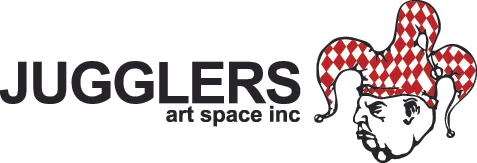Marie Ellis: Feature Artist Profiles - Nick Plowman
/During the 2015 Marie Ellis Prize for Drawing, Jugglers established a range of small initiatives. One of these, initiated by MEPD co – manager Holly Riding, was the Artist’s Profile segment. This involved selected practicing artists who are passionate about drawing. The intent was to expose artists, collectors and the general public to the ongoing conversation and excitement around drawing in its many phases and applications. These conversations have been included in Two Pages as part of our contribution to a more reflective and educated readership.
-Peter Breen: Jugglers Director
Marie Ellis OAM Prize for Drawing Feature Artist – Nicholas Plowman
Nicholas Plowman, Melbourne
- Drawing, it’s my second language.
Tell us a bit about yourself and your work
I have always drawn, ever since I could hold a pencil my Mum says. But it probably wasn’t until I went to TAFE after high school that it occurred to me that I wanted to be an artist, a painter. I then studied at USQ under Charlie Boyle (Painting) and Alan Bruce (Drawing) and things stepped up another notch. However, it was when I returned from Mexico (after visiting Frida Khalo’s studio) that I really chased the autobiographical in my work; this I see now as the first time I actually made “real’ work about my life and my own existence.
Throughout all of this, drawing has always been the base of my practice. I ran life drawing sessions at Jugglers Art Space for six year before moving to Melbourne; here I do life drawing twice a week, it underpins my practice and keeps my eye fit and my hand experimenting.
How would you compare the traditional practice of drawing to the digital approach?
I wouldn’t, I mean by saying that, that I can’t compare them because I have no experience with the digital approach. My only concern would be for losing the ability to understanding the subject by drawing it, studying it, looking at it. Drawing for me is still most important skill to any artist, it seeks answers and attempts to describe. I think most artists are very inquisitive and drawing seems the first logical step to understanding something.
How do you feel the practice of drawing evolved over the past 10 years?
Well, it’s both evolved and devolved. A lot of art schools got rid of drawing for a while, so a lot of graduates were coming out of uni with five or six drawings under their arms; whereas we did life drawing and general drawing twice a week at uni, so that’s four three hour drawing classes every week in second year. The only way to “get good” is to devote time and energy toward it – like anything else in this world. Saying this, I’m all for using technology and exploring digital mark making, but for me there is nothing like walking up close to an image and seeing marks, seeing where the artist’s hand has been. There is nowhere to hide with drawing, it’s all out there for all to see.
*Why are competitions like the Marie Ellis OAM Prize for Drawing important within Australian Arts culture? *
Because it promotes, fosters and encourages drawing. With the changing of the Dobell Drawing Prize to invite only, Australia and its artists (and the public) have lost a great prize for many reasons, it still exists but no longer can any artist have a go. I think the public engage with drawings a lot more than other forms of art, because everyone has used a pencil, biro, crayon etc. People can understand the marks, but still be fascinated and invigorated by the outcomes.
Why is the practice of drawing important to you?
It’s my second language. It allows me to investigate and understand the world and my experiences within it, and to inevitably re-describe; and because there is no place to hide, it is at once exposing and exhilarating.
Read more about Nic Plowman at www.nicplowman.com
Read more about the Marie Ellis OAM Prize for Drawing here www.jugglers.org.au/marie-ellis


